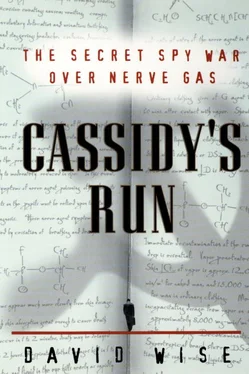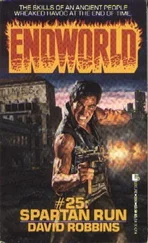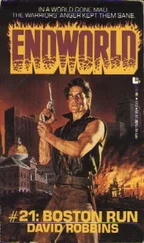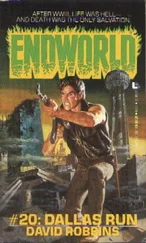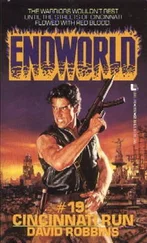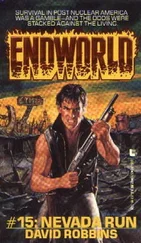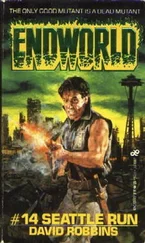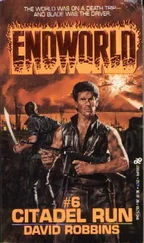Until the publication of this book, Lopez’s previous secret life as a Soviet spy was undisclosed. His term as a member of the Chamber of Deputies is up in 2000.
Early in May1981, Freundlich, having cooperated with the FBI for three years, was asked by the bureau to approach his Soviet control, Nikolai Alenochkin. From the unexpected contact by the illegal, Alenochkin would immediately surmise that IXORA had been compromised.
Dan LeSaffre was IXORA’S case agent when the bureau orchestrated the approach. “Our objective was to get rid of Alenochkin,” he said. “Once he’s been approached by IXORA, he has to report it.” And once he reported the contact, he might be sent back to Moscow.
“We did not expect to turn Alenochkin, a heavy-duty GRU man,” said the FBI’s Jack Lowe. “But it might cast a shadow on Alenochkin with his own people. It makes them rethink all the cases and freeze other operations.”
Alenochkin was serving his third tour in the United States. He had handled IXORA in the 1970s and had returned to New York a little over a year earlier. The FBI believed he was the deputy resident of the GRU station inside the Soviet mission.
When an approach of this sort took place, LeSaffre said, the Soviet officer “would often go under ‘house arrest.’… He would never be alone. There would always be someone with him, even to drive to the office.”
From the bureau’s point of view, there was a logical reason to disrupt the GRU’s operations and attempt to force Alenochkin’s departure from New York. True, he would simply be replaced. “But when you start replacing officers they are usually not as good,” LeSaffre explained. “When you get rid of a top-grade officer like Alenochkin, you may get a lesser one in his place.”
For the encounter with Alenochkin, Edmund Freundlich wore a tiny recorder for two reasons: so that the FBI’s counterintelligence agents could gauge Alenochkin’s reaction and to make sure that IXORA followed instructions and did not try to deceive the bureau.
The ploy succeeded. Alenochkin, who normally could have been expected to remain in Manhattan another two or three years, was abruptly recalled to Moscow on August 7, a little more than a month after IXORA approached him. [8] The approach to Alenochkin was one of the last moves in Operation SHOCKER, which ran from its beginnings in 1958 until 1981, when Alenochkin was contacted by IXORA and Danilin left Canada. Within that time frame, Cassidy’s own role extended almost twenty-one years, from the day he was dangled to the GRU in March 1959 at the YMCA in Washington until his final telephone call to the Soviet mission in New York in October 1979.
Edmund Freundlich diedin New York at age seventy-one on the day after Christmas 1990. His nephew, Robert, lived in a New York City suburb with his wife, Jill. They were flabbergasted to learn from the author that Uncle Edmund had been a Russian spy.
“I had a sense he had in some way been active pursuing his communist leanings,” Robert said. “But I didn’t know it involved doing anything that remotely approached espionage.”
Jill Freundlich could scarcely believe that this kindly, avuncular man had a secret life. “Everybody loved Uncle Eddie,” she said. “I have two children and there are several others in the family. He loved children.”
When Jill and Robert Freundlich cleaned out Edmund’s apartment, they kept few of his possessions. “There were many letters signed ‘Amigo,’ Edmund’s unknown friend, that Robert found…,” Jill said, “but he threw them away.”
There was one keepsake she recalled, however, that perhaps, in retrospect, revealed something of the inner life of the man who had survived the Nazis, then toiled at a nondescript job for Robert Maxwell while living a double life as a spy for Moscow, waiting for the telephone call that might signal nuclear Armageddon.
“He had his mother’s notebook,” Jill remembered, “with a four-leaf clover in it.”
Mikhail Danilin wasstill working for the GRU in Moscow as late as 1993. According to a friend, he had broken a leg and then was hospitalized with a heart attack late that year. In 1994, he died in Moscow.
Boris Libman, who ran the soman plant for the Soviets after he was let out of prison, emigrated to the United States in 1990 and eight years later was living quietly in an East Coast city. [9] His son, Michael, had preceded him. Because the family is Jewish, Michael, who is also a chemist, received permission to leave the Soviet Union for Israel. From there, he made his way to the United States. Libman then came to visit his son and received permission from the immigration authorities to stay.
Vil Mirzayanov, too, came to the United States in 1995, after all charges against him were dropped. He was admitted under a law that assists Soviet scientists in emigrating. His wife and sons joined him, but the marriage broke up. In December 1997, Mirzayanov married Gale Colby, the activist from Princeton who had rallied to his cause.
Robert Schamay, the FBI man who was pulled off the mountain to go to Minnesota in 1976, was shot during a bank robbery in Salt Lake City in 1982. [10] Schamay and another FBI agent were depositing some evidence money in the bank, when the bank robber made the mistake of getting in line behind them. Schamay was shot in the shoulder but helped to subdue the man, Robert James Anderson, who was convicted and sentenced to twenty-five years for attempted bank robbery and ten years for assault on a federal officer with a deadly weapon.
Schamay recovered from his wound and retired to the Sun Belt seven years later.
Charles Elmore, the young FBI agent who had translated the PALMETTO wiretaps in Minneapolis, won his desired transfer to California after the Lopezes fled to Mexico. On August 9, 1979, he had just begun work for the day in the small resident agency in El Centro, California, 110 miles east of San Diego, when James Maloney, an employee of the federal job-training program, walked into the office with a shotgun and killed Elmore and a second FBI agent, Robert Porter, then shot and killed himself. Maloney had been arrested and questioned by the FBI seven years earlier after an anti-Vietnam War protest in San Francisco. [11] Elmore thus became the third FBI agent to be killed, at least indirectly, in Operation SHOCKER; he had volunteered to go to Minnesota to work on the PALMETTO case as a way to get back to the West Coast.
Jack Lowe, one of the FBI agents who had helped to turn IXORA, was working at bureau headquarters in the 1990s. On his desk he kept a small gift, a memento to which no one paid any particular attention, a nail clipper bearing the insignia of the Queen’s Guards.
Phil Parker retired to his native Virginia, where he worked as a security consultant. Joe Cassidy’s case agents, Jack O’Flaherty, Charlie Bevels, Jimmy Morrissey, and Donald Gruentzel, have al lretired.O’Flaherty lived not far from the Cassidys, and their families remained close over the years.
Joe and MarieCassidy retired anonymously to the Sun Belt, revealing to no one their double lives. They did not tell their friends and family; even Cassidy’s own son and daughter knew nothing of his years as a spy. To their neighbors, the Cassidys seemed a typical older couple. Marie remained active in dancing and theatrics in the pleasant community where they lived, and Joe, to those who knew him, appeared to be a genial, retired army sergeant, just another ordinary American content to live out his golden years peacefully in the sunshine.
Julie Kirkland remarried and built a new life for herself in the far West. But she has never forgotten her years with Mark. Their sons are grown men now.
Читать дальше
